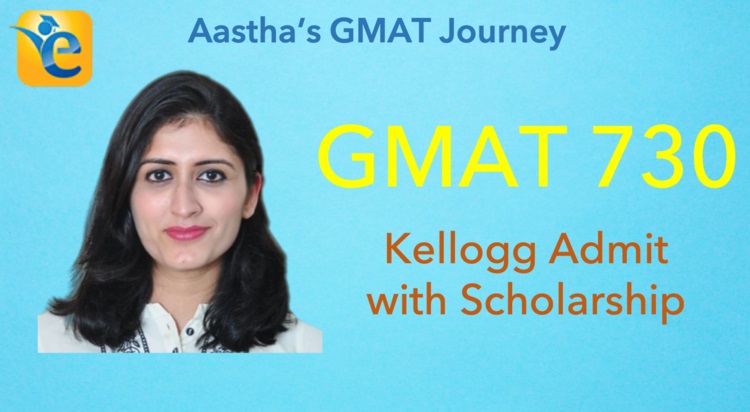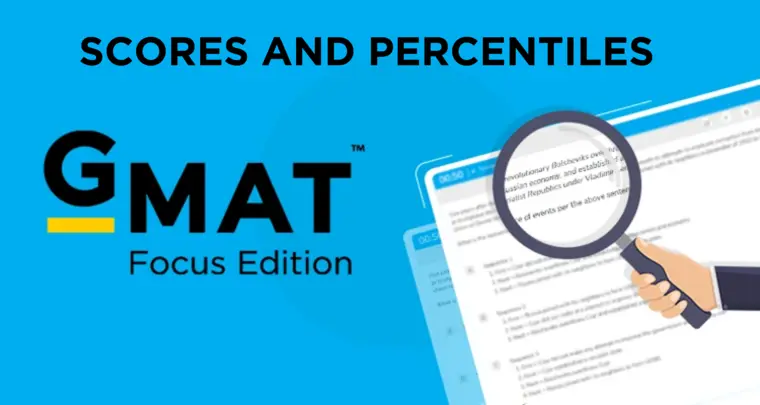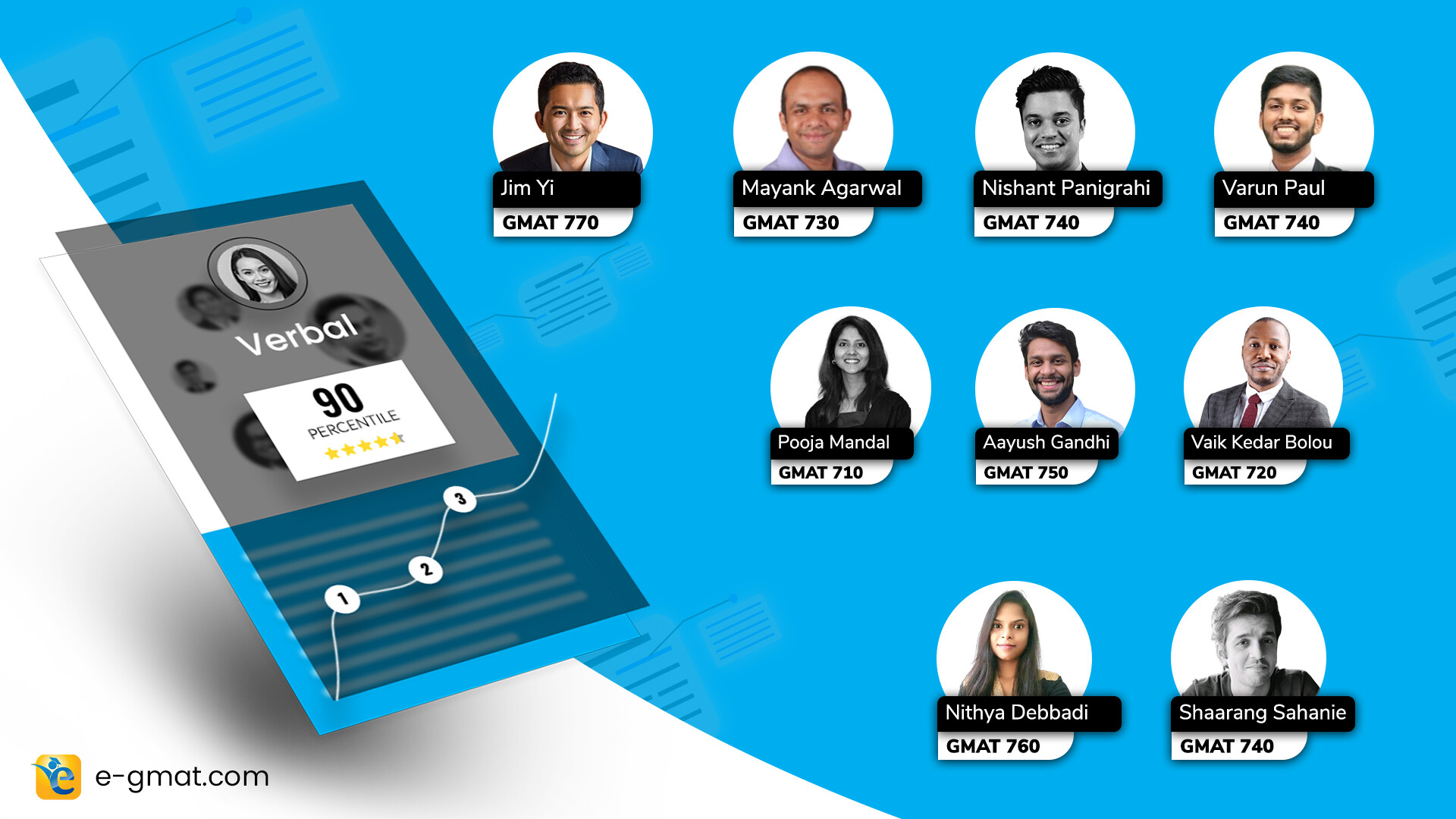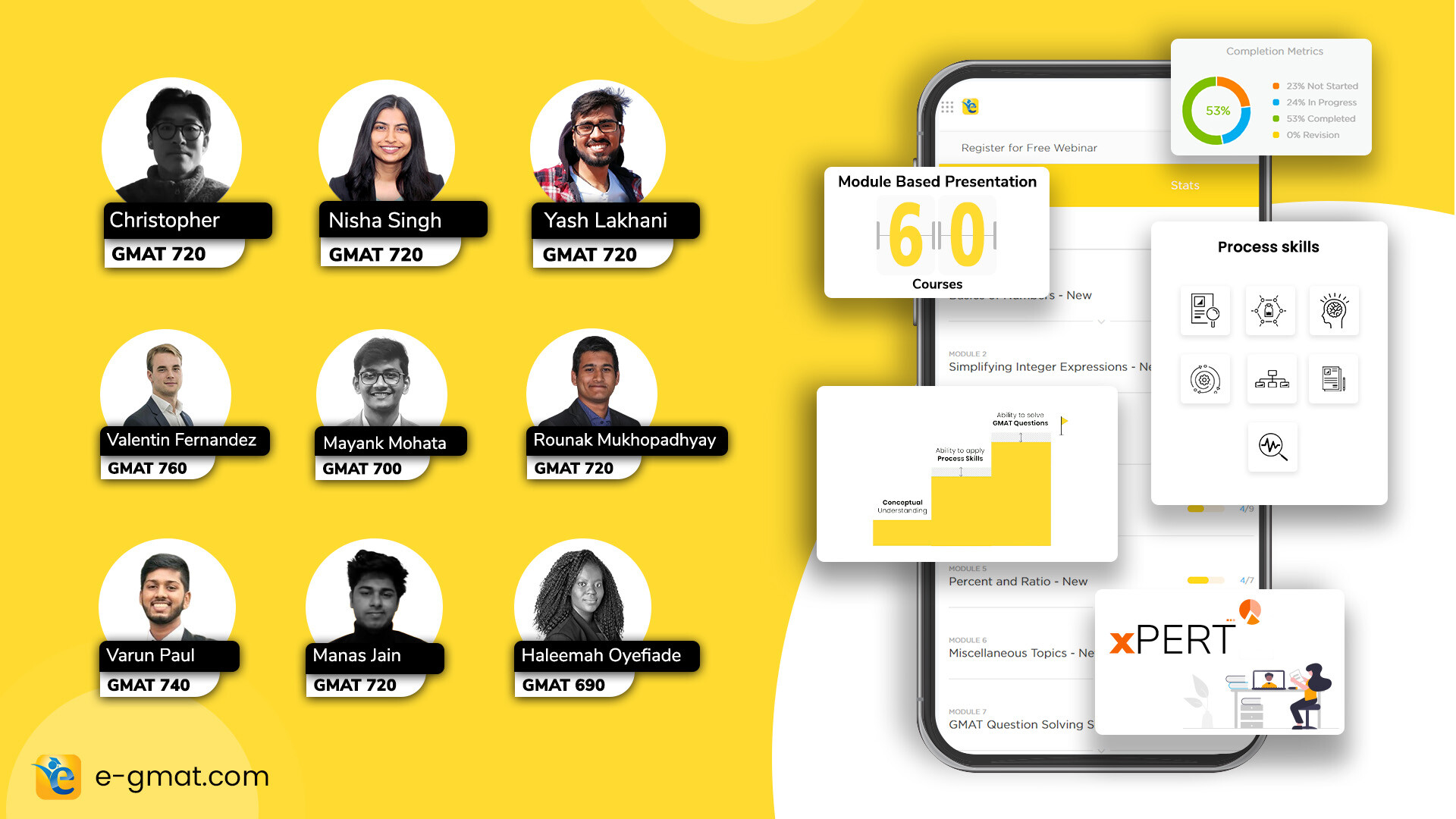Having prior experience with CAT, Aastha was confident about acing the GMAT in her first attempt. She even managed to score 710-720 in her mocks. However, a GMAT score of 640 (Q49, V28) came as a shock to her. GMAT Quant was Aastha’s strong area. It was Verbal that she needed to improve to achieve her target GMAT score.
With this goal in mind, she changed her approach towards Verbal and went for her second attempt. Aastha managed to cross the 700-mark in her second and third attempts (Scored a 710 on both attempts). But she knew it wasn’t enough to help her secure an admit from her dream business school – the Kellogg School of Management.
Aastha wasn’t one to give up easily and was determined to go for a final attempt. With her ‘never-give-up attitude’, Aastha scored a GMAT 730 in her fourth attempt, which helped her get an admit as well as a scholarship from Kellogg.
Here are the key takeaways from Aastha’s journey of scoring 730 on the GMAT:
- Sentence Correction: Focused on meaning and internalized the process to get the maximum gain
- Reading Comprehension: Focused on improving her reading skills in a pressure situation
- Critical Reasoning: Focused on identifying the conclusion and the premise, and stopped questioning the premise.
- Scholaranium: Figured out the areas to boost her ability through scholaranium
To know more about how Aastha scored a 730 on the GMAT you can either watch her video interview or read about her experiences in this blog post
Introduction – Aastha’s GMAT 730 journey
Rajat: Aastha, welcome to this debriefing session, and congratulations on two things. One a 730 on the GMAT and two, securing an admit from Kellogg as well as from CMU’s MS in product management.
Aastha: Yeah. Thank you so much, Rajat. I’m so excited to be here and excited to share my experience with you.
Rajat: Okay. So earlier you mentioned you’d seen many of these interviews and you said one day you’re going to be here, you’re going to help other GMAT takers. So, let’s talk about your GMAT journey. When did you start preparing for it and how did you go about it?
Aastha: I started when I moved to the US in October of 2018. I wanted to get an admission as soon as possible and the only next deadline available was round 3, By Jan 10th or the first two weeks of Jan. So, I decided that I’ll try to make it again for round 3. So that was when I started preparing. As soon as I came here, I think within one month I guess I started preparing and it was a hurried preparation because I wanted to make it in time for Round 3, for most MBA schools.
Did you know a GMAT score of 730+ yields incremental $500K in ROI? Start your GMAT Preparation by Signing up for our FREE Trial and get access to FREE online GMAT preparation resources. We are the most reviewed GMAT preparation company on GMATClub with more than 2100 reviews.
Aastha missed her chane because she didn’t apply early. Learn the 5 reasons why you should apply early to a business school
Also, learn in which application round you should apply in
Rajat: Okay. And that didn’t go so well.
Aastha’s first GMAT attempt
Aastha: Yes, I got a 640. My husband had a great score and his experience had been pretty smooth and I had prepared for CAT and all other B school exams in India. So, I thought that this should be a piece of cake for me and I was kind of overconfident somewhere, and I also had heard from many people that GMAT is sort of different, and easier than CAT. So I thought that I’m decent in Quant, I need to focus on Verbal and I should be able to power through. And I had seen so many success stories. People manage with jobs and they get a good score within two months. I thought that maybe my case would be like that, but I was wrong. I think it was kind of overconfidence that I would be able to get through it and I underestimated what the real examination feel would be like. So
Rajat: Let’s talk about your first attempt. When did you take the test?
Aastha: I took my test on January 5th or 7th
Rajat: That’s about a month and a half of preparation. And what were you scoring in mock tests?
Aastha: Yeah, so strangely, my mock scores were all around 710-720. This was a major difference that I realized across all my attempts that whatever I prepare at home, I gave myself a full exam experience, but I don’t know during the exam, my mental state, and my experience has been really different. SoI think the first time I gave more of free mocks and two other official mocks. But yeah, after that I purchased more mocks because I realized that the official mocks are the best indicators.
Rajat: So, What was your Split (Quant and Verbal score)?
Aastha: The split was Q49 and V28.
How did Aastha improve her first attempt’s score?
Rajat: Yeah, 49 and 28. A good score in Quant and not so good score in Verbal. And I’m actually looking at your ESR. Critical reasoning, sentence correction is not great. Reading comprehension is really good. So, you had your tasks cut out for you? Then how did you approach your prep?
Aastha: I knew that the low-hanging fruit here would be Sentence correction because if I practice enough it kind of becomes like a process. When I went back to e-GMAT and studied it again, I realized that more and more I internalize that process of understanding the meaning and applying the basics of what could possibly go wrong. I realized that if I’m actually focusing on the meaning and going by the process, I should be able to get the maximum gain out of here. It has always been tricky. Like, even in mocks I used to sometimes score really well if I understood the argument really well. And sometimes when I’m not focusing enough or probably when a topic is out of my comfort zone, for example, if it’s just too much philosophy or if the argument is this too big and I think I have to try and answer it.
Aastha: I didn’t have a skipping strategy at the time. So, I think time management also was not great in the initial attempts. So, I used to approach each question with full enthusiasm with the intention of getting it correct instead of being smart about it. Probably understanding the GMAT scoring pattern and then understanding that one wrong question would probably, no matter in the entire test.
Rajat: Yes, it doesn’t. And that’s the beauty of a computer adaptive test. So, you prepared for your second attempt, you went through the course and you got a 710. So, it was a big improvement.
Aastha: Yeah, actually I used to read a lot about people’s experiences. I was expecting 700 to 710 in my first experience but 640 was definitely a shocker given my mock exam scores. So, yes I think in the second attempt I was expecting it to be 710, but when I saw the score I was not as delighted. I was happy that I’ve crossed the 700-mark because I can start being considered at Tier 1 and Tier 2 schools. I was not as happy because I was targeting Kellogg at that time as well and I was targeting scholarships too. I got this score in March.
Rajat: So there is that temptation that let’s enjoy life. You have the 710, it’s enough. So, what kept you going towards 730-740?
Aastha: I realized that time that I will not be getting an admit last year. So, I had applied to Emory MBA last year at 640 and I told them that I have a 710 now, but I got a decline from the Emory MBA one-year MBA. I was almost going to apply to Kellogg one year MBA last year, but then I got advice from current students that said in round 3 I might not get an admit and probably reduce my chances for next year as well. So it’s better to apply with a good score and that too in round 1. So, I decided to take the GMAT again.
And I, of course, was targeting at least 740 to get into a Tier-1 B school. I approached the prep from both quality and quantity point of view. I purchased all the official mocks this time. E-GMAT had also come up with their mocks, but I had done a lot of scholaranium questions. So I think e-GMAT was honest about it that it’s not really right for me because it will not give me the right picture.
Yeah. So I did not go for those mocks, but I deep-dived into a scholaranium this time. That where exactly am I lacking. For example, in the second attempt (710) I did very poorly in RC, which was really surprising because I had got 98th percentile the first time. So, I realized that I should not be relying on RC. I should really build on SC and CR. So, I went back to scholaranium. I took some targeted tests.
I think for the third time I was totally focused on mastering CR. I enjoyed CR, but I wasn’t able to perform very well. But, I realized that when I was reading I was actually reading it like a story and then focusing on the entire story. This time I just found a confusion and focused on that which is similar to e-GMAT’s approach i.e., find the confusion and find the premises.
Rajat: So, this is your second attempt on 7th of March, right? RC truly failed you here. But, you did phenomenally well in SC and CR. And you probably took RC for granted.
Aastha: Maybe because I think I was getting most of them correct.
Aastha’s third try at the GMAT
Rajat: But, but that’s what happens when you get rusty. Even things that you’re really, really good at, you falter. In your third attempt on the 28th of June, your CR is still decent. RC came back up when you focused on it. And SC went down a bit. Tell me about your third attempt.
Aastha: My third attempt has a different story. So when I was giving my test, there was some miscommunication between the examiner and me and I asked her how much time is left in my break and she said six minutes. So I was like, that’s a lot of time.
I realized that in the earlier attempts I was not taking enough breaks. But, when I went inside it said you have your break time by four minutes, I think she meant that I am six minutes into my break and she did not hear my question clearly and that made me tense. My hands were shaking and I was nervous because I wanted to make up for that time. And GMAT is a test of maintaining your mental balance? Everything other than the exam in front of me was going on in my mind.
Rajat: So, in this case, you did phenomenally well by scoring a 710.
Aastha: When I came out I thought that if I can score a 710 in this situation then I can definitely score more. So, I decide to give GMAT another shot . And GMAC was also quite supportive. I told them about my experience. That I had a miscommunication and didn’t get timely attention during the test. So, they replied that I can retake the GMAT for $60.
Aastha’s fourth GMAT attempt and she scored a 730
Rajat: That is good to know. Okay, so you went for your fourth attempt and you got a 730. How did that feel?
Aastha: I felt much better because I realized that I would not come back for 750 or 760. But I realize that, okay, I have been able to break that barrier. It felt really good.
Aastha’s advice for other GMAT takers
Rajat: So, you’ve had a pretty long GMAT journey. So, now with your experience, what would you advise others?
Aastha: I think for verbal, it’s just about not losing hope. I think after my second and third attempts, I was feeling hopeless. But, with the belief that GMAT is within my reach. And once you’ve kind of conquered that in your head that I can get a V44 also because this is a very logical exam. It’s not a test of vocabulary or fluency. So, when I started approaching it that way prep became easier. Also, having a quantitative approach i.e., analyzing ESRs analyzing my scholaranium data especially SC and CR made me realize that this exam can also be given a very structured approach and you can plan your success. Also, if you’re well prepared and if you are mentally composed on the test day and manage your time well, you’ll surely get a good score.
Rajat: Okay. So I’m actually looking at your course dashboard and it’s a very nice dashboard and I’m really happy to see the concept scores, and pretty much all the course was done. I see good time spent on many of the files over here. And then when I look at practice quizzes. So how did you approach the application files?
Aastha: Yeah, I think when I was in my third and fourth attempts instead of going back to concept files, I was doing application files again and again because application files really helped me compare my process versus the ideal process. So, I think that application quizzes especially for SC and CR helped me fine-tune my process of approaching the question.
Aastha’s specific tips on SC, CR, and RC
Rajat: So let’s go a bit deeper there. So give me an example during your third or fourth attempt, where you solved the question your way, but then you saw how Payal approached the question.
Aastha: So I think for SC, for example, I would usually dive into solving the question first before understanding the meaning and it lead me to interpret the question statement incorrectly. Once I started understanding the meaning then I think it really fastened the process. This happened because when I started to understand the meaning and practiced so many questions and saw Payal doing so many questions, I could point out errors quite early on. Similarly for, critical reasoning. I think I just fine-tuned my understanding of identifying the conclusion and what exactly are the premises. Also, once I was able to identify the assumptions in the argument, I think it really helped.
Rajat: So when you did all of these questions in scholaranium, did you also look at the solutions?
Aastha: Yes, of course. I mean, I think I spent a lot of time understanding the solutions, and even for the questions I got right, I wanted to make sure that I got it right for the correct reason and not just by fluke or some other reason.
How did Aastha approach the Kellogg admissions process?
Rajat: So, once you were done with the GMAT, how did you approach the Kellogg admission process?
Aastha: Actually I was only focusing on one-year programs and Kellogg was the one I was targeting. So, I went through the questions and realized that I need some external help as I had a one-year gap in my work experience.
Rajat: You worked with Prithvi Raj, He’s an ex Aringo guy based out of New York. And did you work with him just on Kellogg or also on the CMU?
Aastha: I hired him for unlimited applications, so I spent a lot of money over there. But then I mean the good or bad thing, but the product management course at CMU starts in January. The result came out in September. And I had not even applied to Kellogg by then. But I realized that the only program I would really like to look at beyond the MS in Product Management would be the Kellogg one-year MBA. So I decided to not apply to any other school but Kellogg. Then before I joined CMU, I got an admit from Kellogg and then, I mean, it was like a dream come true.
Kellogg’s interview process
Rajat: How was the interview process at Kellogg?
Aastha: Oh, yeah. So with Kellogg, I told them that I would be in India and I want an interview there, but I got an interview right before leaving for India. So I asked that if there is an alumnus here, I would love to have an in-person interview. They were very nice to organize an interview with the one-year MBA alum in Saint Paul, Minnesota. The interview was very conversational, very easygoing. I think they have a transcript of some questions to ask and then they can add up questions if they feel that they need to. So I mean, the questions were nice and they asked me about my experience and about how I feel that Kellogg one year MBA is the right program for me and why right now. And I think what they’re looking for is how clear you are about your objectives.
Rajat: Yes. Well, okay. That sounds great. Well, congratulations, Aastha and you have pretty much achieved what you wanted to, I would say, and one thing checked off and now I think the next journey starts. All the best.















